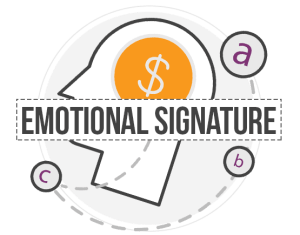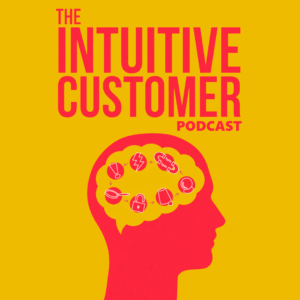What gets measured gets managed. This oft-quoted line from Peter Drucker is more pertinent today than ever concerning Customer Experience strategy. Every marketer should measure their performance in Customer Experience to understand what drives value for customers.
We discussed measuring Customer Experience correctly in a recent podcast. With 11 books on marketing and Customer Experience, our guest Don Peppers, bestselling author, blogger, business strategist, and acclaimed keynote speaker, joins us to share his wisdom on the subject.
Peppers says that you have to think about the quality of the Customer Experience and why you measure it. Is it to see how well you have done? Is it to establish a business case for the program? Is it to reward people who interact with customers? The answer to why will have much to do with how you measure your results.
The Types of Data for Your Metrics
Peppers says there are two different types of data that feed your metrics:
- Voice of Customer (VOC) Data: Peppers calls these metrics interactive data, meaning your customer interacts with you through a poll. Some examples are Net Promoter Score® (NPS) or Customer Satisfaction surveys. However, this type of data is subjective and influenced by many factors outside of your control.
- Observational Data: Peppers says this is stats you can see, like complaints received, quality control, or return-rates on products. There is observational data today in social media, also, meaning it’s not what people tell you in a poll but what people tell their friends.
Both are vital to measurement. However, Peppers says many marketing professionals, favor VOC data over observational data, and that’s not always great.
It is understandable how it happens. VOC is the most interesting and the most written about type of data. It is also easy and accessible. Moreover, what could be better than hearing from the mouth of the customer what they’re saying?
However, because marketers are not scientists, they don’t think about it in quantitative terms. Marketers do not analyze in statistics or approach it with the scientific method.
I understand what Peppers is saying. For example, many of you know that I fly a lot back and forth across the pond and I always fly with Delta. I also always get a survey after the flight, which is far too many of them. What is worse, the only time I ever complete the bloody things is if I’ve had a particularly good or bad flight. It isn’t always the “best” data.
Peppers agrees that this data isn’t ideal for measuring Customer Experience performance but says that VOC surveys are essential to discover areas of opportunity in the experience. So, while my review isn’t necessarily providing excellent data for a Customer Experience Metric, it does serve a vital purpose for Customer Experience. Furthermore, a positive VOC survey can be an excellent resource for finding testimonials.
When it comes to observational data, a significant source can be the measure of product and service performance quality. Peppers says it is here you get into the operations of the company. The company’s manufacturing people, service delivery people, and so on, have metrics to gauge their quality. Marketing should be interested in those metrics because product and service quality is vital to the Customer Experience quality.
(If you’re thinking about where to go to get more observational data about customer satisfaction, Peppers recommends the book, The Satisfied Customer: Winners and Losers in the Battle for Buyer Preference by Claes Fornell.)
VOC Data Can Be Deceiving Where Numbers Are Not
Observational data is useful to your Customer Experience Metrics. The problem is many marketers are not statisticians or analysts, and they don’t always recognize the issues that the numbers bring out.
Peppers recalls a consulting gig for a large public enterprise outside the US a few years ago that measured their NPS every month. The company would call 400 customers at random and have them rate on a scale of 1 to 10 how likely they would be to recommend their brand to others. Then, they used the strategic NPS as a metric of corporate performance. The company put their senior executives on a gated bonus system where if the NPS went down, their bonuses would, too.
At the end of 2013, the strategic NPS plummeted, and all the bonuses were canceled. They were upset — the company called Peppers demanding to know what happened.
Peppers asked if they were tracking the NPS of their competitors. They weren’t. He pulled up the consumer confidence figures at the same time. It turns out that consumer confidence plummeted at the same time their strategic NPS did.
Peppers knew that the consumer confidence was reflected in the NPS numbers. When the economy improves, customers are happy with everybody. If it is not, customers feel depressed about everybody. Therefore, when consumer confidence was low, customers didn’t want to recommend the company to anyone. The NPS score dropped because of how customers felt about the economy in general.
The example shows why interactive data with customer can be unreliable and subjective. You must understand what’s going on in consumers lives if you use this data—and their emotions are always going on, whether consciously or subconsciously.
In our Global Customer Experience consultancy, we look at the area of customer emotions. We were happy to note that some organizations perform a “sentiment analysis” that picks up on trends in customer emotions.
Peppers also thinks this is promising because it opens the doors to contact center analysis for observational data. Companies have thousands of hours of customer interactions recorded. Peppers would like to see an effort to quantify the sentiments of customers in the contact centers to see if customers were actually pleased with the experience or not.
The Golden Question
Years ago, I read in one of Peppers books (written with Martha Rogers, Ph.D.) about the Golden Question. The Golden Question refers to an interaction with a customer that reveals a great deal of insight about the nature of the customer’s motivations. Rather than a cumbersome 20-question survey, customers answer only The Golden Question—and they tend to enjoy it over slogging through the other one.
Pets.com had a golden question that reliably identified the most valuable pet owners. It was, did you give your pet a Christmas present? Now, some people do; some people don’t. But Pets.com knew that people who gift their pets on holidays are typically the more valuable pet owners for their business.
Another example of a Golden Question in action occurred when Peppers was working with an automaker that wanted to recruit their customers for an owner loyalty program by giving them a gift. Peppers suggested they provide the customers with the choice of racing gloves, a package of three children’s’ movies, or a collapsible umbrella with a road atlas. What the customers chose became a type of golden question that revealed who they were as a person.
There are a variety of questions that can reveal motivations like that. Peppers says AI will make Golden Questions easier to identify, too. Moreover, in the era of big data that we have today, there are a lot of observations that we can make. When you combine that with the data gathered by the Golden Question, you could learn a lot about what drives value for your customers. Knowing what drives value is a critical element for designing an improved experience for your customers.
The Effect of CX on Lifetime Value
Metrics can help you improve your experience. However, metrics can also help you make a business case for your program with the finance people at your organization. This area is one that Peppers thinks is significant to marketers today. Marketers need to think about Customer Experience in economic terms. After all, it costs money to create a better Customer Experience.
Specifically, Peppers advocates for creating a lifetime value for your customers. Lifetime value is what customers will buy from you in the future.
Customers create two different kinds of value with their interactions with you. One is the money they spend at the moment. However, they also have a future value that is dependent upon their opinion of their experience when they are spending money with you. In other words, their likelihood to come back tomorrow depends on how they feel about their experience with you today.
Every customer has a lifetime value, even if you don’t know what it is. You can estimate the lifetime values of your typical customers based on the longevity and behavior of your long-time customers. The logic is that if customers have an excellent experience, then the lifetime value goes up. If the customer has a miserable experience, the lifetime value goes down.
The question is, how much value did your Customer Experience today create?
If you want to make a case for delivering a better Customer Experience, you want to communicate to your finance people how much it will be worth. Peppers says it is crucial to participate in modeling or at the least hypothesizing on an active basis about what your customer lifetime values are. Also, you should know what the likely leading indicators of lifetime value changes are.
One way to do that is with universal surveys, which is VOC data that can be unreliable. However, Peppers has a tactic that can make this method more useful. Instead of having all your customers participate in a survey, choose 1,000 random customers, and give them a significant incentive to participate. With a higher participation rate, you will have better data that can show how much future value your improved interaction can create with customers.
Peppers hopes that as more and more data is available, marketers will begin to get more scientific in their decision-making. He says while he already sees more statistical analysis than you did in the past, particularly with digital marketers, the majority of marketers do not. It can be challenging to be scientific when you do not look at numbers.
The fact is you should be measure your Customer Experience efforts. I also support tying them to performance incentives to show that the company culture supports the Customer Experience program efforts. I agree that VOC data can be subjective and unreliable. I also hope more marketers can embrace the statistical analysis of observational data to understand what drives value for customers.
However, if you aren’t using the right measures, you could manage yourself into a lot of problems with your Customer Experience.
To hear more about Are You Using the Right Measures in more detail, listen to the complete podcast here.

What customers say they want and what they really want are often different things. It is vital to know what drives value for your organization. Our Emotional Signature research can tell you where you are compared to other organizations and what to focus on to drive value for your customers. To learn more, please click here.

Hear the rest of the conversation on Are You Using the Right Measures on The Intuitive Customer Podcast. These informative podcasts are designed to expand on the psychological ideas behind understanding customer behavior. To listen in, please click here.
If you enjoyed this post, you might be interested in the following blogs and podcasts:
MEMORY CUES – EXCELLENT CX IS USELESS IF NO ONE REMEMBERS IT
THE SURPRISING EFFECT OF CHOICE ARCHITECTURE ON YOUR CX
THE 5 ESSENTIAL PRACTICES FOR YOUR CUSTOMER EXPERIENCE
Colin Shaw is the founder and CEO of Beyond Philosophy, one of the world’s leading Customer experience consultancy & training organizations. Colin is an international author of six bestselling books and an engaging keynote speaker.
Follow Colin Shaw on Twitter @ColinShaw_CX

